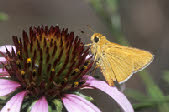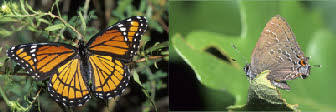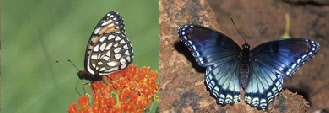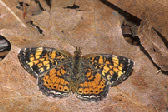The Butterflies of the World Foundation
A Non-




Myncea Satyr
Cissia myncea, Cramer, 1780
Subfamily Satyrinae

Cissia myncea, Mount Saint Benedict, Trinidad, 1 July 2002 Ref #: I-
Taxonomy
The family Nymphalidae is the largest butterfly family and includes about 6,000 species which are further divided up into 12 subfamilies. The common name for the family is the Brushfoots or Brushfooted Butterflies. This strange name is because the first pair of legs are significantly reduced, sometimes to mere stubs, and look like little brushes. Some of the most common and well known species are in this group such as the Monarch, Red Admiral, Blue Morpho and Painted Lady. Some of the longest lived butterflies are in this family with some species living over 10 months as adults. The Brushfoots are distributed worldwide, with the highest diversity found in the tropics. With this variety, there is also quite a difference in behavior, adult food choices and habitat preference from species to species.
All photographs, artwork, text and website design are the property of The Butterflies of the World Foundation (unless otherwise stated) and are protected under national and international copyright laws. Photographs, artwork or text on this website may not be reproduced in any way without prior written consent of The Butterflies of the World Foundation.
General Information:
Cissia myncea belongs to the subfamily Satyrinae. This species is found in Suriname, Trinidad, and Brazil. Like most satyrs, it prefers wooded dark areas.
Lifecycle:
The lifecycle of this species is not well known.